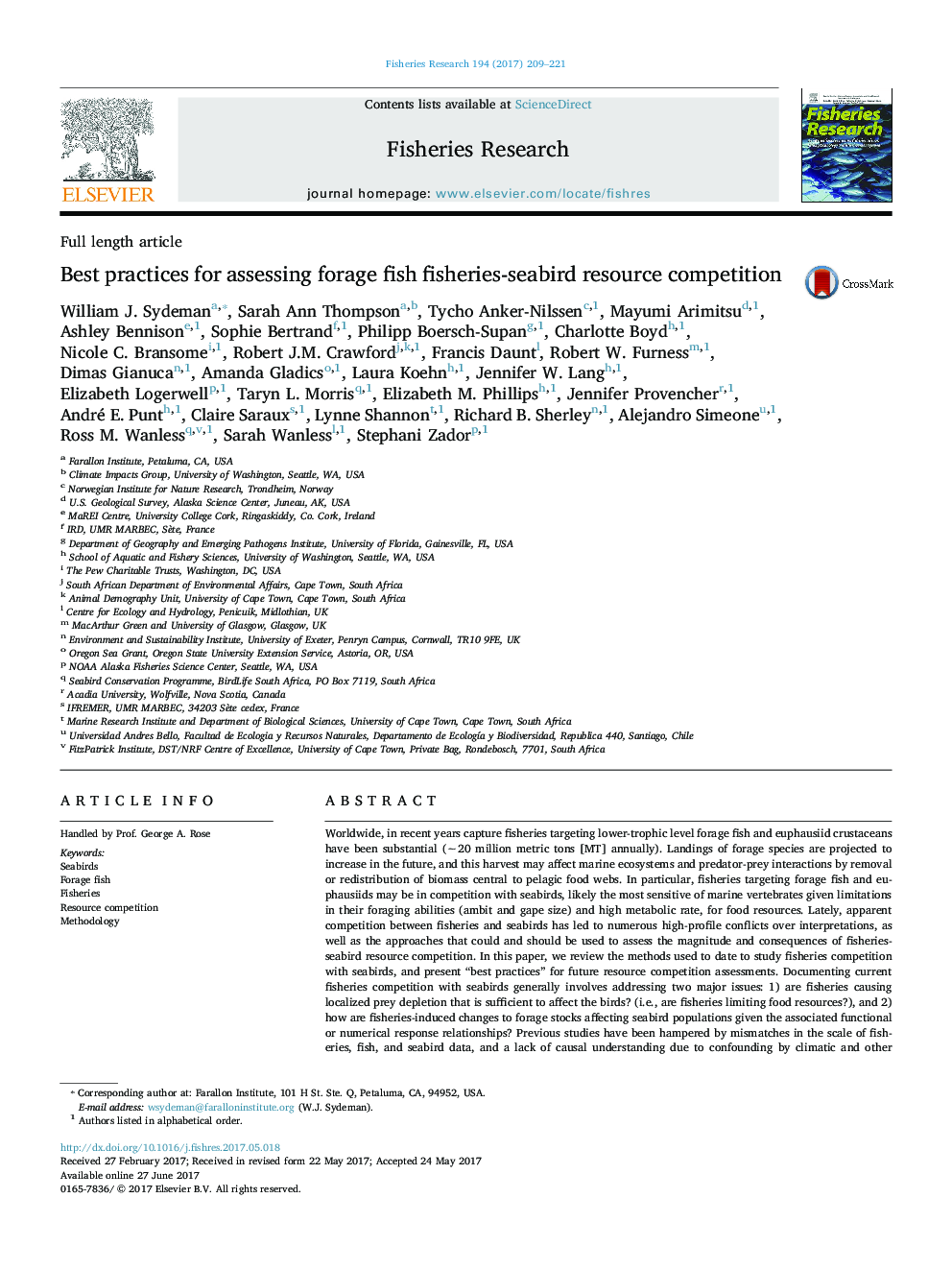| کد مقاله | کد نشریه | سال انتشار | مقاله انگلیسی | نسخه تمام متن |
|---|---|---|---|---|
| 5765431 | 1626776 | 2017 | 13 صفحه PDF | دانلود رایگان |
- Review approaches used to study fisheries â seabird competition.
- Highlight strengths and weaknesses of observations, models, and experiments.
- Present best practices for future studies of this complex issue.
Worldwide, in recent years capture fisheries targeting lower-trophic level forage fish and euphausiid crustaceans have been substantial (â¼20 million metric tons [MT] annually). Landings of forage species are projected to increase in the future, and this harvest may affect marine ecosystems and predator-prey interactions by removal or redistribution of biomass central to pelagic food webs. In particular, fisheries targeting forage fish and euphausiids may be in competition with seabirds, likely the most sensitive of marine vertebrates given limitations in their foraging abilities (ambit and gape size) and high metabolic rate, for food resources. Lately, apparent competition between fisheries and seabirds has led to numerous high-profile conflicts over interpretations, as well as the approaches that could and should be used to assess the magnitude and consequences of fisheries-seabird resource competition. In this paper, we review the methods used to date to study fisheries competition with seabirds, and present “best practices” for future resource competition assessments. Documenting current fisheries competition with seabirds generally involves addressing two major issues: 1) are fisheries causing localized prey depletion that is sufficient to affect the birds? (i.e., are fisheries limiting food resources?), and 2) how are fisheries-induced changes to forage stocks affecting seabird populations given the associated functional or numerical response relationships? Previous studies have been hampered by mismatches in the scale of fisheries, fish, and seabird data, and a lack of causal understanding due to confounding by climatic and other ecosystem factors (e.g., removal of predatory fish). Best practices for fisheries-seabird competition research should include i) clear articulation of hypotheses, ii) data collection (or summation) of fisheries, fish, and seabirds on matched spatio-temporal scales, and iii) integration of observational and experimental (including numerical simulation) approaches to establish connections and causality between fisheries and seabirds. As no single technique can provide all the answers to this vexing issue, an integrated approach is most promising to obtain robust scientific results and in turn the sustainability of forage fish fisheries from an ecosystem perspective.
Journal: Fisheries Research - Volume 194, October 2017, Pages 209-221
